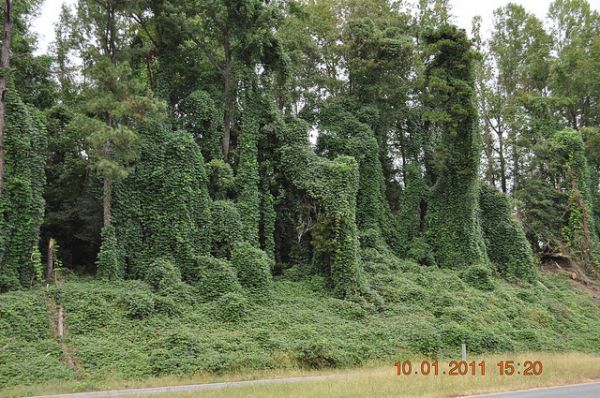
A few years ago, Alex posted about kudzu, a peculiar invasive species of fast-growing vine that has become a symbol of the South. Photographs of kudzu covering trees, telephone poles, and abandoned houses are impressive to those not familiar with the plant. We who live with it make enough jokes about it to add to its mystique. In popular literature, it became “the plant that ate the South.”
Though William Faulkner, Eudora Welty and others in that first great generation of Southern writers largely ignored kudzu, its metaphorical attraction became irresistible by the early 1960s. In the often-cited poem “Kudzu,” Georgia novelist James Dickey teases Southerners with their own tall tales, invoking an outrageous kudzu-smothered world where families close the windows at night to keep the invader out, where the writhing vines and their snakes are indistinguishable. “I thought the whole world would someday be covered by it, that it would grow as fast as Jack’s beanstalk, and that every person on earth would have to live forever knee-deep in its leaves,” Morris wrote in Good Old Boy: A Delta Boyhood.But that’s not the way it is. The oft-quoted statistic of kudzu covering nine million acres came from a dubious source that has since been debunked. In fact, there are many myths about kudzu that just ain’t necessarily so, that you can read about at Smithsonian.
For the generations of writers who followed, many no longer intimately connected to the land, kudzu served as a shorthand for describing the Southern landscape and experience, a ready way of identifying the place, the writer, the effort as genuinely Southern. A writer for Deep South Magazine recently gushed that kudzu is “the ultimate icon for the South...an amazing metaphor for just about every issue you can imagine within Southern Studies.” One blogger, surveying the kudzu-littered literature of the modern South, dryly commented that all you have to do to become a Southern novelist is “throw in a few references to sweet tea and kudzu.”

No comments:
Post a Comment